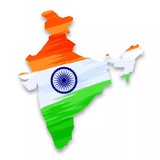The #KoldamDam Hydropower Project commonly known as #KolDam, is an embankment dam on the #SatlujRiver upstream of the #DeharPowerHouse. It is 18 km from #Bilaspur off the #Chandigarh-#Manali Highway (NH-21) near #Barmana, #HimachalPradesh. The main purpose of the dam is hydroelectric power generation and it will support an 800 MW power station. The dam was constructed by National Thermal Power Corporation (NTPC).
The foundation stone for the dam was laid on 5 June 2000 by Prime Minister Atal Bihari Vajpayee.
The foundation stone for the dam was laid on 5 June 2000 by Prime Minister Atal Bihari Vajpayee.
Virasat-e-Khalsa is a museum of Sikhism, located in the holy town, #AnandpurSahib, near #Chandigarh, the capital of the state of #Punjab, India. The #museum celebrates 500 years of the #Sikh history and the 300th anniversary of the birth of #Khalsa, based on the scriptures written by the tenth and last human guru, Guru Gobind Singh Ji. It serves to attract tourists and pilgrims. This results in a consultation between religion and emerging need in the building environment. One side it promotes hand crafts to locals as well as nurturing a sense of heritage, besides it recalls to infinity by the volumetric interference of existing skyline is another phase of a visible Urbanism dilemma.
The #OpenHandMonument is a symbolic structure designed by the architect Le Corbusier and located in the Capitol Complex of the Indian city and union territory of #Chandigarh. It is the emblem and symbol of the Government of Chandigarh and symbolizes "the hand to give and the hand to take; peace and prosperity, and the unity of mankind". The largest example of Le Corbusier's many Open Hand sculptures, it stands 26 metres (85 ft) high. The metal structure with vanes is 14 metres (46 ft) high, weighs 50 short tons (100,000 lb), and was designed to rotate in the wind.
#SukhnaLake in #Chandigarh, India, is a reservoir at the foothills (Shivalik hills) of the Himalayas. This 3 km² rainfed lake was created in 1958 by damming the #SukhnaChoe, a seasonal stream coming down from the Shivalik Hills. Originally the seasonal flow entered the lake directly causing heavy siltation. To check the inflow of silt, 25.42 km² of land was acquired in the catchment area and put under vegetation. In 1974, the Choe was diverted and made to bypass the lake completely, the lake being fed by three siltation pots, minimising the entry of silt into the lake itself.
